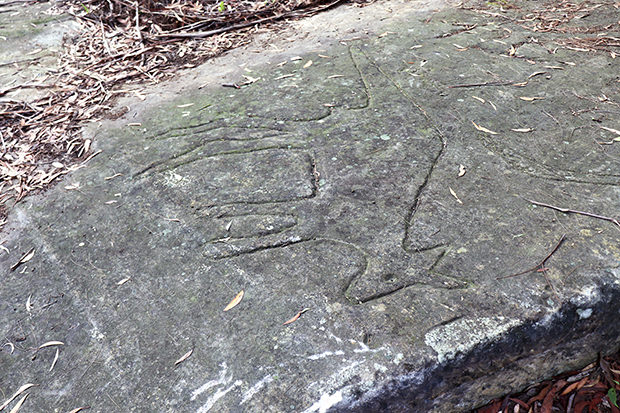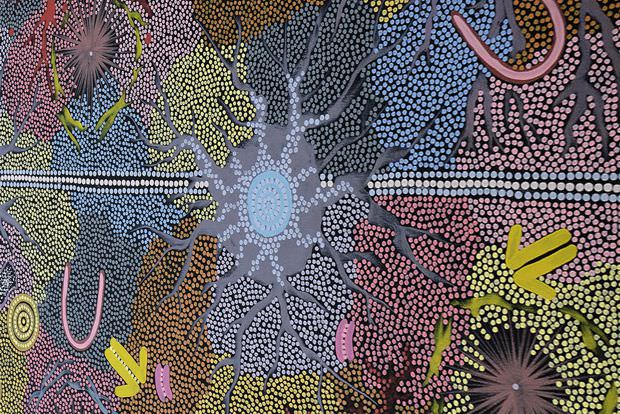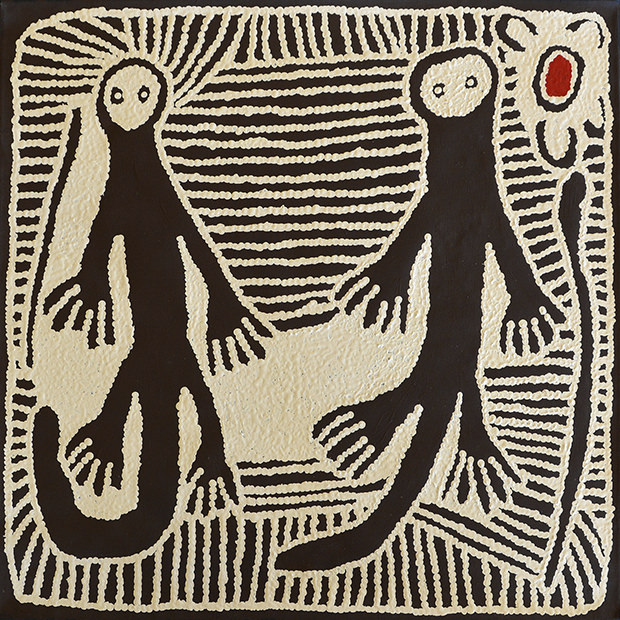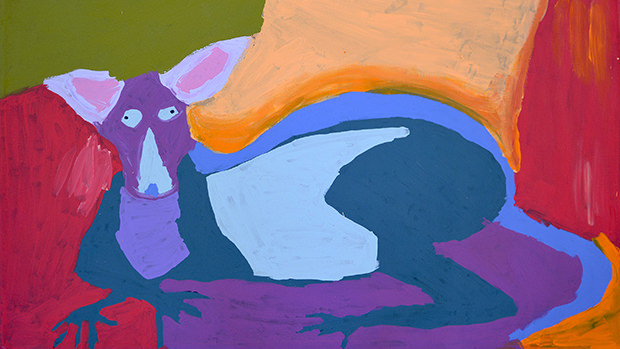Kangaroo Aboriginal Paintings
Kangaroo Aboriginal art has been created for thousands of years. They are depicted in ancient rock art sites, and contemporary Aboriginal artists use an array of modern mediums and styles to depict this revered animal.
One of the most iconic Australian Animals
Found only in Australia, the Kangaroo is well-known for its powerful back legs and large muscular tail. They are part of the Macropodidae family, which also includes wallabies and quokkas.
Their unique physical features make them easy to make out in ancient rock art sites. They are outlined in ochre and natural earth pigments, and sometimes their internal organs are shown in a technique known as the ‘x-ray style’.
Around the Sydney region, you will also find them portrayed in rock engravings sites.
 Rock engraving site on Wallumedegal Country in Sydney
Rock engraving site on Wallumedegal Country in Sydney
Something else that makes this marsupial easy to recognize is that it is the only large animal to hop from place to place. Their animal tracks are clearly identifiable thanks to their large hind legs which leave a distinct mark on the ground.
Aboriginal Symbol for Kangaroo
They are sometimes represented by their track marks in Aboriginal art. They look like a set of mirror-image tick shapes. They feature in this artwork by Nyrulla Possum:
 Nyrulla Possum 'Grandmother's Country'
Nyrulla Possum 'Grandmother's Country'
An important role in the lives of Indigenous Australians
Pre-contact, Aboriginal people invested in making the land appealing to the kangaroo, which provided meat and clothing. Fur, bone, and gristle were also used for ornaments, weapons, and ceremonial and everyday objects.
In many Aboriginal cultures, the animal is a Creator spirit in their Dreamtime stories. They also hold a totemic status and are featured in ceremonies.
This animal often features in Aboriginal art, either as part of the natural landscape, as prized food from a hunting trip, or as the Dreaming ancestor.
 Linda Syddick Napaltjarri 'Two Kangaroo Men and the Sun'
Linda Syddick Napaltjarri 'Two Kangaroo Men and the Sun'
In this artwork, Linda Syddick Napaltjarri paints two Ancestral Kangaroo men. They are part human, part animal. Linda’s father owned many of the stories and Dreamings associated with them. Before he died, he passed on many of the stories to Linda.
Early Aboriginal artists William Barak and Tommy McRae used drawings to help people understand their traditional way of life. A variety of native animals are represented in hunting scenes.
Artists from the Warlukurlangu Art Centre often paint Red Kangaroo Dreaming. Some artists such as Cherylyn Napangardi Granties and Karen Napaljarri Barnes depict the animal figuratively.
 Karen Napaljarri Barnes 'Kangaroo Dreaming'
Karen Napaljarri Barnes 'Kangaroo Dreaming'
Other artists use traditional iconography to represent this Dreamtime story. Arc shapes mark the ancestral beings camp and hooked shapes usually depict the footprints. Long, straight lines represent the tail tracks.
